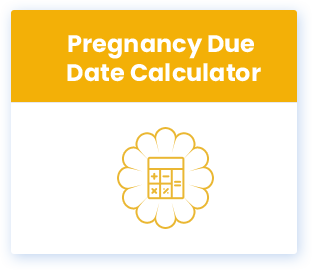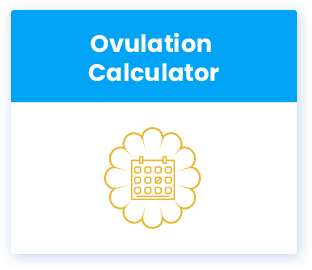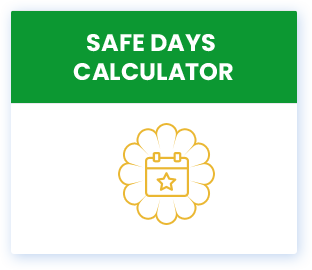Noise monitoring has become a trusted feature in many baby monitors as it helps parents know when their baby needs attention. The monitor picks up sounds and alerts parents when noise reaches a certain level. A video baby monitor can also give useful insights into sleeping habits, helping families create a calmer and safer rest environment.
If you keep reading, you’ll get the lowdown on what noise monitoring actually is, why anyone should care, and the ways this tech works in different settings. This article will dig into how tracking sound isn’t just about keeping things quiet—it ties into health, community planning, and even your own sanity as a parent. Turns out, this whole noise thing is kind of a big deal. Stick around and you’ll get why paying attention to sound isn’t just for sound nerds; it’s legit useful.
What is Noise Monitoring and Why is it Important?
Baby sleep monitors are total lifesavers for tired parents. It often uses sound detection as part of its features. Instead of nervously hovering over the crib, you get a heads-up the second your baby starts wailing or even just fussing a bit. It’s like having a tiny security guard for your nursery. By making noise levels easier to follow, noise monitoring supports both safety and peace of mind.
Noise monitoring is super useful and very convenient. You ever try to track every little peep at 3 a.m.? Nope. This tech does that for you and lets you know if stuff’s getting too loud or weird in the room. You get to catch your breath and maybe a nap instead of pulling an all-nighter, paranoid you’ll miss something.
Understanding Different Types of Noise and Their Sources
Babies are affected differently by various noises coming from different places. By recognizing the sources, parents can understand why sound tracking is so important in the daily routine. A lot of parents are now relying on noise monitoring to control volume levels and to keep the environment more comfortable for their babies.
The following are several examples of noise and where they usually come from:
- Household noise: At home, there’s always something buzzing or beeping—dishwashers, TVs blaring, or that baby sleep monitor that goes off every time your kid so much as wiggles.
- Traffic noise: The sound of traffic that is always there outside your home—cars honking, motorcycles revving, buses groaning, trains going by. Well, if you live close enough to a street, then you are quite familiar with it.
- Workplace noise: Work can be just as bad. Offices have their own symphony of keyboard clacking, phones ringing, and that one ancient printer wheezing away. Factories have machines and tools making a racket all day long.
- Environmental noise: Nature isn’t exactly silent either. At times, it may be a strong wind, heavy rain hitting the window, or a bird that screams at 5 a.m. as if it owns the place. Any of these incidents can interfere with your rest or concentration.
- Community noise: Let’s not forget the neighbors. Maybe they’re throwing a party, maybe there’s construction down the street, or maybe someone decided today’s the day to mow the lawn at the crack of dawn. Community noise is basically everyone else’s life overlapping with yours, whether you like it or not.
The Technology Behind Modern Noise Monitoring Devices
Modern devices use several tools to capture and measure sound in the most accurate way. Technological advancements have made noise monitoring more dependable and less complicated for families, offices, and neighborhoods. Consequently, parents also get advantage from these improvements, as many baby products have been upgraded to include the feature of sound monitoring.
The following are the tools that depict the modern devices’ way of dealing with sound:
- Microphones: Sensor built-in which detects sound waves and converts them into signals which a device can interpret.
- Digital processors: Miniature mechanisms that gather sound information, and, based on the intensity of the noise, decide to issue a warning or not.
- Sound filters: A feature that allows lowering of background noises, so that even the smallest sound or a baby crying can be noticed.
- Wireless connectivity: Allows the linking of devices to applications or monitors which provide live updates and control.
- Specialty uses: A baby sleep monitor usually has a combination of sound detection and movement tracking for additional safety.
How Noise Monitoring is Used in Workplace and Industrial Settings
Parents who take their babies to work will find sound monitoring a very significant part of their supervision. Noise monitoring helps track when the environment gets too loud, which can disturb a baby’s sleep or make them unsettled. A sleep monitor for babies can work together with sound tracking, alerting parents when changes happen so they can respond quickly.
By making it easier to follow sound patterns, noise monitoring gives parents more confidence that their child stays safe and comfortable even in busy places. It also helps parents manage their own routines better, since they can focus on work while trusting that the device will signal them when their baby needs attention.
Noise Monitoring for Environmental and Community Planning
Noise from busy streets, construction projects, or public events can affect families. Noise monitoring provides planners with a way to measure the loudness of an area and decide what changes are required to make it more family-friendly. The reduction of traffic near schools or the establishment of quiet hours in neighborhoods are some of the ways sound monitoring can lead to the creation of safer spaces for children.
Parents can understand this concept personally. Just as a baby sleep monitor helps track sounds that disturb rest, community noise monitoring works on a larger scale to protect families. When sound levels are understood and managed, parents gain more confidence that their children can grow up in an environment that supports health and comfort.
Personal Noise Monitoring for Health and Wellness
Loud or nonstop noise? Yeah, that’s not great for babies. It messes with their heads and bodies—like, they get all wound up, can’t focus, and good luck getting them to nap. If you’re a parent who has a noise monitoring device, it’s honestly a lifesaver. You can tell right away if things are getting too loud, and then you actually have a shot at dialing it down before everyone’s nerves are fried. A little bit of awareness goes a long way, you know? Suddenly, your house feels calmer and your kid’s not losing their mind over every bang and clang.
Most folks have seen something like this in action. Baby sleep monitors with sound alerts? Classic. They start squawking if your kid’s sleep gets wrecked by any noise. Grown-ups can get in on this too—personal noise trackers are a thing. They spit out data on just how loud your place is, which is honestly eye-opening. Makes you want to turn down the volume at work, or maybe carve out an actual chunk of peace and quiet. Not rocket science, just a little tech helping you chill out.
Interpreting Noise Data and Setting Actionable Baselines
Parents might want to analyze the noise levels in their homes to find out what changes would make a more peaceful environment for the family. Through noise monitoring, patterns can be recognized, problems can be found, and it can be decided when an action is required. By listening to what the data indicate, parents may do very simple things which will be both a relief to them and to their kids.
When looking at the noise data and using the baselines to be of help, these are the areas that can be concentrated on:
- Find out what the normal noise level is in your home both during the day and at night.
- Recognize any sudden loud noises that could wake the kids or cause them to lose concentration.
- Measure the average readings against noise levels that have been recommended as healthy.
- Decide on a baseline that will enable you to follow the developments and determine the times when the cutting down of noise is necessary.
- Keep up with the data in order to uncover patterns over time.
Conclusion: The Future of Noise Monitoring and Soundscape Management
Families benefit in many ways when noise monitoring is used to understand how sound affects health and comfort. Parents who already use a sleep monitor know how helpful it can be to notice changes in their baby’s rest. Tracking sound isn’t just about obsessing over decibels; it’s about actually noticing what messes with your family’s vibe.
Once you start paying attention to how sound creeps into your daily life, you kind of can’t unsee it. You’ll find yourself turning down the TV, or even sneaking in some no-sound zones just to keep the peace. Sometimes just chilling out on the background noise is enough to help everyone sleep better or actually finish a book for once. So yeah, little changes, like making the house less of a circus, can pile up into real benefits. Better sleep, less crankiness, maybe even more patience.
- Baby Monitors with Noise Monitoring: How They Work and Why They Matter - October 2, 2025
- Attachment Parenting Guide: Principles, Practices, and What to Expect - September 9, 2025
- Understanding Your Baby’s Cry: A Parent’s Mini Guide - June 23, 2025
- Bottle vs. Breastfeeding: What Works for You and Your Baby - June 18, 2025
- 10 Yoga Poses For Kids at Home: Benefits Of Yoga For Kids - June 12, 2025
- Parenting Guide to Child Development: Key Milestones from Birth to 10 Years - June 4, 2025
- Summer Vacation Plans Ideas with Kids - May 27, 2025
- Nutritious Dried Fruit Treats for Toddlers (16–24 Months) - May 25, 2025
- Importance of Screen Time Management for Kids - May 24, 2025
- The 6 Most Common Pregnancy Concerns First-Time Moms Have - May 23, 2025













